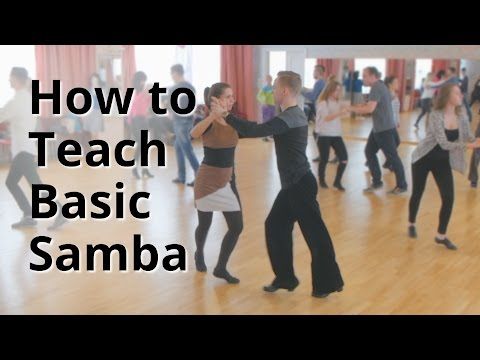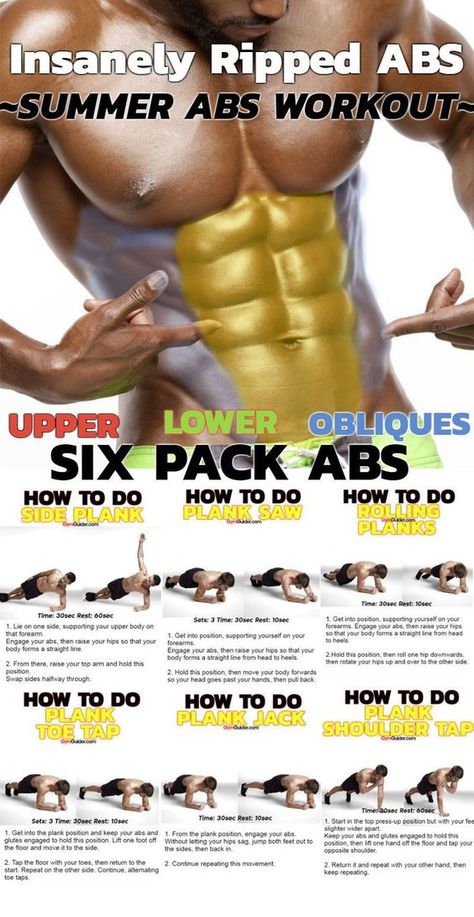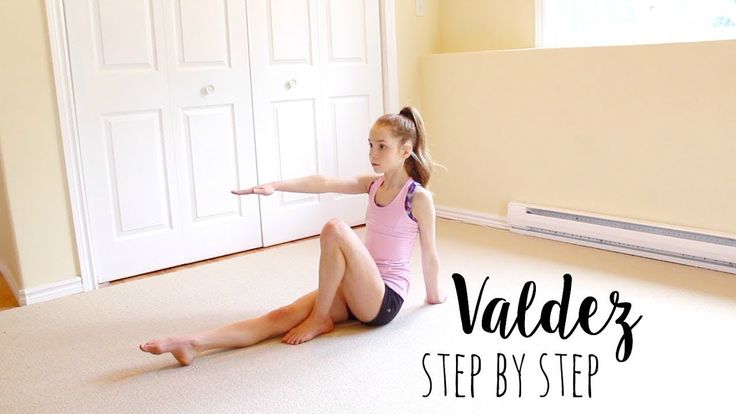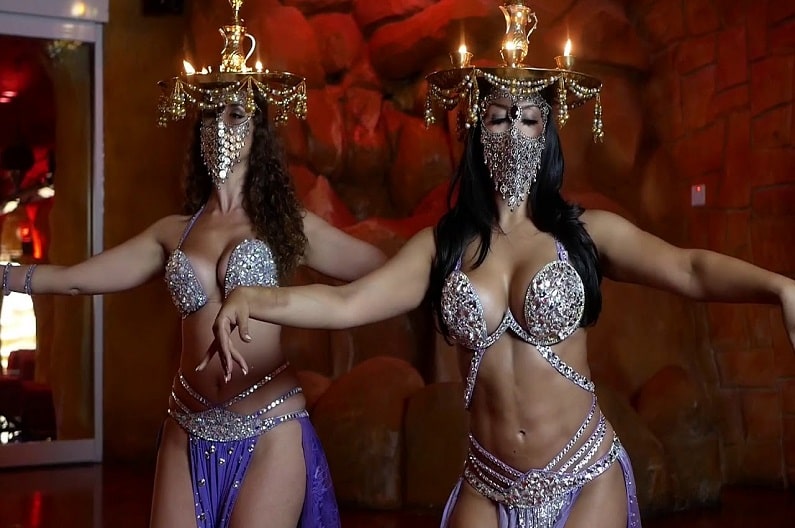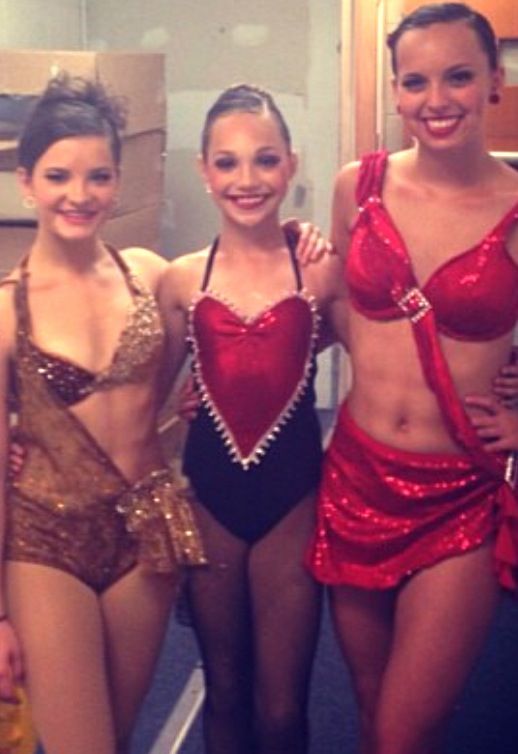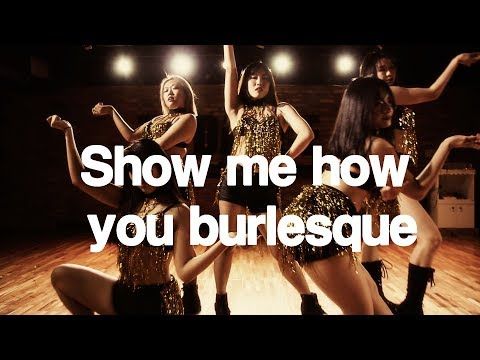How to dance jive for beginners
Learn Basic Jive Steps
Jive is an exciting partner dance, fun, easy to learn, and playful in nature. Because it's fast and energy-consuming, it's also an excellent form of exercise. Plus, it looks great on a dance floor.
- Basic steps
- Instructions & Diagrams
- Video
- Recommended Video Lessons »
Quick intro
Jive is a faster version of swing and shares many things with it, from footwork to underarm turns, swivels, etc. It evolved from early swing dances like Boogie-Woogie and Jitterbug. During WWII American soldiers introduced it to Europe, especially UK, where it became very popular with the youth. In 1968 it was added as the fifth Latin dance in International competitions.
It's a very boppy dance where dancers use more bouncy movements, lifting the knees and bending or rocking the hips. A lot of kicks are used. It's one the most energetic of all the dances.
Jive is generally danced to a music in 4/4 time in a wide variety of tempos from slow to very fast. The great thing about it is that it can be danced to all sorts of music - old, new, Swing, Rocknroll, Country, electronic, pop...
It's a dance for everyone, easy to learn, relaxed, lots of fun, and extremely social. It is the fastest of the Latin dances and will give you a great cardio workout. What a fantastic way to get and stay in shape. Now grab your dancing shoes and get jiving!
Basic steps
The basic steps for jive are based on a simple six beat sequence: 1-2-3-a-4-5-a-6. The count begins with the rock step (left foot step back, right foot in place), followed by the two triple steps (chasse) that are counted: 3-a-4, 5-a-6.
The Rock Step is simply changing weight from one foot to the other, except that it is taking a little step back, instead of to the side. A chasse is a series of three steps to the side.
Jive is generally danced to music with four beats to the bar that usually contains bouncy rhythms and easy melodies.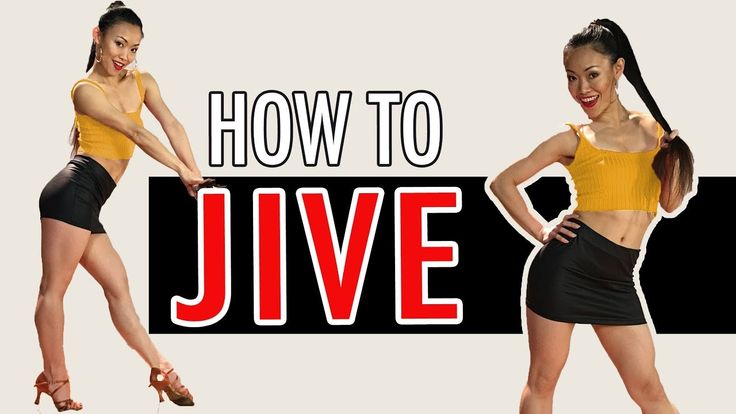 The basic step (for men) starts with a rock step (changing weight from one foot to the other) followed by triple step to the left (left, right, left) and triple step to the right (right, left, right). The lady mirrors the man. Remember, the timing is - 1, 2, 3 & 4, 5 & 6.
The basic step (for men) starts with a rock step (changing weight from one foot to the other) followed by triple step to the left (left, right, left) and triple step to the right (right, left, right). The lady mirrors the man. Remember, the timing is - 1, 2, 3 & 4, 5 & 6.
Instructions & Diagrams:
Jive is danced with the lady and man facing each other. The man's left hand loosely holds the lady's right hand. The man leads starting with his left foot and the lady follows his movements.
Basic Men's Steps
- Step back with your left foot (Rock step)
- Right foot in place, weight shifts to it
- Sidestep to the left with your left foot (Chasse to the left)
- Move your right foot to your left foot
- Sidestep to the left with your left foot
- Right foot in place, weight shifts to it (Chasse to the right)
- Sidestep to the right with your left foot
- Sidestep to the right with your right foot
Basic Lady's Steps
- Step back with your right foot (Rock step)
- Left foot in place, weight shifts to it
- Sidestep to the right with your right foot (Chasse to the right)
- Move your left foot to your right foot
- Sidestep to the right with your right foot
- Left foot in place, weight shifts to it (Chasse to the left)
- Sidestep to the left with your right foot
- Sidestep to the left with your left foot
Practice these steps until you are able to do them in time with music.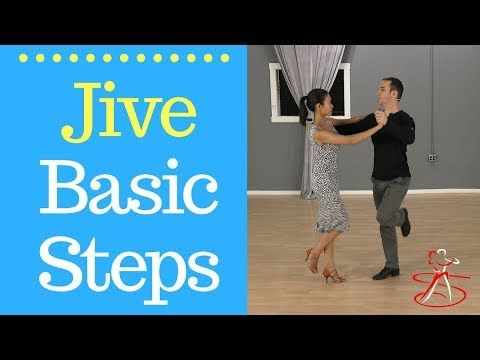 Don't forget to count: 1-2-3-a-4-5-a-6.
Don't forget to count: 1-2-3-a-4-5-a-6.
Video
In this video you will learn the basic step plus the underarm turn. Can you do it as fast as in the video:
more videos »
Looking for more video lessons? We recommend these »
Video: Learn to Dance the Jive
The Jive got its start during the energetic yet turbulent times of WWII. It's a tamed-down version of wild, frenetic dances like the Jitterbug and Lindy Hop.
Having been involved in thousands of group classes over the past 10 years, we found that the Jive was difficult for beginners to learn because of the quick footwork involved. Rather than jumping right into triple rhythm, our program, which has proven to be highly successful, teaches this dance in two phases. First, we cover all the step patterns in Single-Rhythm Jive, which is fairly slow and easy to learn. Then we upgrade those figures you already know with Triple Rhythm. This not only makes it easier to grasp everything, but it gives you a fallback dance you can use when the music is too fast. You get two dances for the price of one!
Then we upgrade those figures you already know with Triple Rhythm. This not only makes it easier to grasp everything, but it gives you a fallback dance you can use when the music is too fast. You get two dances for the price of one!
In this video dance class that totals 90 minutes of instruction, you'll learn the basic elements of Jive with a common group of figures that you can use to look great in any social dance setting. We give you enough technique that you can look polished quite easily.
Curriculum
This course is one and a half hours long. The program is broken into multiple parts to help make it easy for you to work on the individual figures.
Introduction (length 13:10)
In this lesson we cover the music of Jive, the unique Jive hold, and the basic step pattern for Single Rhythm Jive. You'll also learn some of the things to watch out for so that you avoid common mistakes.
The Throwaway (length 10:02)
This lesson covers the Throwaway.
The Lady’s Underarm Turn (length 10:09)
One of the staple figures in the Jive is the Lady’s Underarm Turn, officially referred to by the unoriginal name "Change of Place from Right to Left" and "Change of Place from left to Right."
The Change of Hands Behind the Back (length 10:24)
We cover this figure and how to lead it. You'll also learn a fun variation!
Jive Walks (length 10:31)
In this lesson you'll learn the Jive Walks, and some technique to look good and avoid common problems. Did you know that "Jive" used to mean "Fake" and the Jive Walks were meant to describe fake walking? It's true!
The Stop and Go (length29:53)
This lesson covers a more advanced figure called the Stop and Go. You'll also learn three versions of lady's arm styling for this figure.
Triple Rhythm Jive (length 20:45)
In our final lesson, we show you Triple Rhythm technique and how to perform all the figures that have been covered, but now in Triple Rhythm foot pattern. We also show why you shouldn't throw away your knowledge of Single Rhythm Jive, as it can be very useful in common situations.
We also show why you shouldn't throw away your knowledge of Single Rhythm Jive, as it can be very useful in common situations.
Want to know what the program looks like before you commit? Watch a brief 4-minute free preview from the Introduction video.
Limited-time special offer!
This video, normally accessible only to Premium or VIP members, will be available to all Basic members until we are able to return to live classes, as a special gift to Delta Dance members.
Members-Only Content
This content is available to Delta Dance members only. Membership grants you access to special content, our members-only videos, and downloadable choreography and technical guides. You may cancel at any time.
Click here to register or login below with your membership credentials.
Jive - how to dance correctly
Ballroom dancers are well acquainted with jive, because the dance is included in the mandatory Latin program. In addition, it is the jive that is performed last, acting as the culmination of the whole show. But not only the "ball dancers" have an idea about this dance, because rock and roll, seen in the movies, is a close relative of the jive and consists of similar figures. We offer several recommendations on the topic: jive - how to dance correctly.
In addition, it is the jive that is performed last, acting as the culmination of the whole show. But not only the "ball dancers" have an idea about this dance, because rock and roll, seen in the movies, is a close relative of the jive and consists of similar figures. We offer several recommendations on the topic: jive - how to dance correctly.
Dance etiquette and partners
Basic jive movements can be found in the video tutorials on our website, so we would like to pay attention to another aspect of the dance. There are two types of jive, one is faster and more agile, seen in Latin competitions, and the other is slower and more secular (social). It is secular dance that is most interesting to a wide range of people, as it develops the skill of communication and dancing with different partners. According to social dance etiquette, you can change partners as often as you like. Previously, only an invitation from a man was considered acceptable, and a partner could dance with one partner no more than three or four dances in an evening.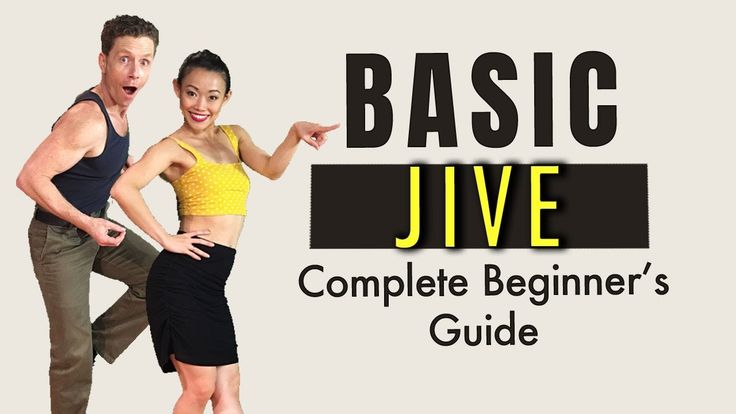 In the 21st century, these rules have lost their force, although in certain circles it is still believed that a man should choose a partner. Given the lack of dancing men, the women's initiative becomes a guarantee that the partner will even take to the floor. There is an additional recommendation in this regard: do not be afraid to dance with beginners. Men who dance with novice partners note that you can simply switch to dancing without complicating it with advanced movements and techniques, this allows you to relax in a sense. For girls, dancing with a novice partner can be a great investment for the future: when after a while, a man gains a high technical level, he will prefer "familiar" partners.
In the 21st century, these rules have lost their force, although in certain circles it is still believed that a man should choose a partner. Given the lack of dancing men, the women's initiative becomes a guarantee that the partner will even take to the floor. There is an additional recommendation in this regard: do not be afraid to dance with beginners. Men who dance with novice partners note that you can simply switch to dancing without complicating it with advanced movements and techniques, this allows you to relax in a sense. For girls, dancing with a novice partner can be a great investment for the future: when after a while, a man gains a high technical level, he will prefer "familiar" partners.
Music
Listen to jive music in your spare time, you will get used to it and begin to feel the rhythm better. When the music is familiar to you, let the body follow it, because that is the main purpose of jive dance. It's better to do simple moves that hit the beat perfectly than complex moves that don't. The main thing for beginning dancers is to feel the rhythm; do not try to raise your hand in time or put your foot in time, the movements should be a continuation of the music and your body. We remind you that all accents in jive go to an even count. Another recommendation: feel the rhythm of your heartbeat before you go dancing, you will be able to achieve the best results if you feel your inner pulse and synchronize it with the rhythm of the music. If, at the same time, you can feel the inner pulse of your partner, then the dance will give you a very special feeling (from the outside you will look like a harmonious couple, where the movements of one partner flow into the movements of the other and all this is in the rhythm of the music).
The main thing for beginning dancers is to feel the rhythm; do not try to raise your hand in time or put your foot in time, the movements should be a continuation of the music and your body. We remind you that all accents in jive go to an even count. Another recommendation: feel the rhythm of your heartbeat before you go dancing, you will be able to achieve the best results if you feel your inner pulse and synchronize it with the rhythm of the music. If, at the same time, you can feel the inner pulse of your partner, then the dance will give you a very special feeling (from the outside you will look like a harmonious couple, where the movements of one partner flow into the movements of the other and all this is in the rhythm of the music).
Warm muscles
To jive properly, you need to warm up. Experienced dancers do a warm-up that involves all muscle groups. For beginners, we recommend starting each dance class with a few stretches and turns (single and double). The difference during jive performance will be noticeable. When it is not possible to warm up (for example, at a jive party), start the dance with a slow rhythm and simple movements, then you and your partner will have the opportunity to warm up and move on to more complex figures and their combinations. We would like to note that different dancers have a different warm-up threshold, men should remember this, because it is they who set the rhythm and level of complexity of the dance.
When it is not possible to warm up (for example, at a jive party), start the dance with a slow rhythm and simple movements, then you and your partner will have the opportunity to warm up and move on to more complex figures and their combinations. We would like to note that different dancers have a different warm-up threshold, men should remember this, because it is they who set the rhythm and level of complexity of the dance.
Jive (Latin American Dance Program)
Rhythm. Even counts 2 and 4 are allocated within a measure. Highlight the first count and then all the even ones, emphasize with a voice with an accent
How it works
Through the bottom, with pressure on the floor, with a feeling of weight transfer from foot to foot and a swing movement in the body and good deep work of the knees.
Rock (swing) and steps to the side. The basic jive step is the meringue step.
- Position on the pads slightly forward of the body - Correct positioning of the body, body slightly forward, make a booklet, straighten the supporting knee - Stop at the level of the knee on the "pass" -
Position in a pair
In a closed position, partners stand at some distance opposite each other. The partner's right hand lies, clasping the partner's left shoulder blade, and her left hand is freely placed on top of the partner's right hand on the edge of his right shoulder. The bend of the partner's hand then repeats the bend of the partner's hand. Keeping the left elbow at the same height as the right elbow, the partner raises his left hand so that his palms are at eye level, and takes the partner’s right hand into it. The partner's left arm should be slightly bent. The partner should offer his left hand to the partner in a gesture similar to the gesture of a policeman stopping traffic at an intersection. The thumb is naturally set aside. The partner puts the middle finger of her right hand between the thumb and other fingers of the partner, palm to palm. Then she lowers her index and ring fingers, and only after that - the little finger. He wraps his thumb around the base of the partner's thumb, after which the partner wraps his fingers around the partner's hand, slightly squeezing them.
The partner's right hand lies, clasping the partner's left shoulder blade, and her left hand is freely placed on top of the partner's right hand on the edge of his right shoulder. The bend of the partner's hand then repeats the bend of the partner's hand. Keeping the left elbow at the same height as the right elbow, the partner raises his left hand so that his palms are at eye level, and takes the partner’s right hand into it. The partner's left arm should be slightly bent. The partner should offer his left hand to the partner in a gesture similar to the gesture of a policeman stopping traffic at an intersection. The thumb is naturally set aside. The partner puts the middle finger of her right hand between the thumb and other fingers of the partner, palm to palm. Then she lowers her index and ring fingers, and only after that - the little finger. He wraps his thumb around the base of the partner's thumb, after which the partner wraps his fingers around the partner's hand, slightly squeezing them. The partner's right hand repeats the bend of the partner's left hand.
The partner's right hand repeats the bend of the partner's left hand.
Steps
Basic steps consist of a fast syncopated chassé (step, prefix, step) to the left and right, along with a slower back and forward step. The hips are displayed at the expense of "and". After each step, the weight is in front, and all steps are taken from the toe. Different step lengths on the highway will help with the bills.
In the highway through the inside of the foot we advance. Rib down knee up.
Hands
Isolation is appreciated (you can exercise with a filled glass of water). At the top, there should be no reaction to the dance below.
- Exercise alternately raising the knees - Always the body in an inclination, hanging over the pads, it is permissible to slip a little on the supporting leg.
- Foot close position select count 2 (as time step cha cha), weight press on the ball of the free foot, quickly press the foot, twisting twist in the hips for acceleration.